

 There are certain countries, Sweden for instance, that have specific Christmas specialities that are eaten only for Christmas. Christmas food in this sense does not exist in France. Here people eat loads of delicacies instead. Tons of oysters, lobster, scallops, foie gras, marinated or smoked salmon, Bresse chicken. Cheeses such as Mont d’Or and Roquefort. And much more. It is not difficult to combine the French “Christmas food” with good wines.
There are certain countries, Sweden for instance, that have specific Christmas specialities that are eaten only for Christmas. Christmas food in this sense does not exist in France. Here people eat loads of delicacies instead. Tons of oysters, lobster, scallops, foie gras, marinated or smoked salmon, Bresse chicken. Cheeses such as Mont d’Or and Roquefort. And much more. It is not difficult to combine the French “Christmas food” with good wines.
You don’t have to serve a Sauternes with your foie gras but a little bit of sweetness in the wine is a good thing. A Pinot Gris from Alsace is a good choice. It also has a richness that goes well with the liver. Or imagine a duck breast with a sauce made of red wine. This you could pair with a Champagne Blanc de Noir. This is quite a full-bodied Champagne, made from only Pinot Noir and/or Pinot Meunier. This is an elegant combination hard to resist.
Turkey is popular for Christmas. I would serve it in the Danish style with red cabbage. A red Burgundy could be great, but maybe a touch too light in style. A not-too-young Bordeaux is another option and outside of France consider for example a Sangiovese, perhaps in the form of a Brunello di Montalcino.
Choosing wine to go with cheese can be a challenge because you often serve many cheeses at the same time. A powerful white Bordeaux, preferably a Pessac-Léognan, is really good with white mould cheese like Camembert and Brie de Meaux. It could go well also with blue cheese. If you want to be less traditional, you can choose a white Rioja made from the Viura grape or even a Grüner Veltliner from Austria. Aged Parmesan cheese is perfect with a powerful red from the Rhône Valley. Maybe you have a Châteauneuf-du-Pape in your cellar? If not, both Malbec (Argentina/Cahors) or a Madiran are good alternatives. With a goat cheese, we love to have a white wine made from Chenin Blanc, either from the Loire Valley or from South Africa.
Whatever you choose, remember that it is not so complicated to combine food and wine, not even when you are planning a party. It is mostly about common sense. Serve powerful wines with heavy food, lighter wines with lighter food.
And don’t be too traditional! If you want to treat your guests to a real rarity, do not wait until the last course. Better to drink the best early-on when the guests have their taste buds and senses intact.
Are you looking for good New Year’s resolution? We have one to suggest: try a new wine region each month. This is a resolution you can renew every year. The wine world continues to grow.
One more thing before we let you loose on the Brief: Isn’t it time for you to book a wine tour soon? For you or for a friend (Christmas gift tip!). We have a great tour coming up this spring. See more in the Brief.
Britt & Per
PS: Recommend to your friends to read the Brief !
What’s on at BKWine Tours
- Chile and Argentina in South America, February 6-21, 2016
- South Africa, February 26 – March 7, 2016
- Bordeaux, April 20-24, 2016
For more information please contact us on email or on phone (we’re on French time), or go to our wine travel site on www.bkwinetours.com!
We also make custom designed wine tours – on-demand tours for you and a group of friends, for your company (maybe to scout new winegrowers?), for a special event… We can combine winery visits and wine touring with other activities: gastronomic workshops, visit to an oyster farm, truffles hunting, cheese making, and more. More info on the custom designed and bespoke BKWine wine tours and travel here!
Wine tours in Finnish: We also do wine tours in Finnish. And in German, Norwegian, Spanish… Do you want the latest news and updates on our wine travel activity? Subscribe here! (Second alternative BKWineTours.com)
Do you want the latest news and updates on our wine travel activity? Subscribe here! (Second alternative BKWineTours.com)
From the World of Wine
Zest: a synthetic cork for sparkling wines
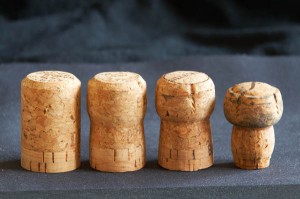 Nomacorc, manufacturer of synthetic wine corks, has launched a synthetic cork for sparkling wines. The cork will start selling in Italy beginning of 2016. The visual aspect of the cork has been important for Nomacorc and Zest looks indeed very much like a champagne cork made of natural cork. If champagne producers would be willing to abandon the natural cork remains to be seen. It seems like a good idea to start selling Zest in Italy.
Nomacorc, manufacturer of synthetic wine corks, has launched a synthetic cork for sparkling wines. The cork will start selling in Italy beginning of 2016. The visual aspect of the cork has been important for Nomacorc and Zest looks indeed very much like a champagne cork made of natural cork. If champagne producers would be willing to abandon the natural cork remains to be seen. It seems like a good idea to start selling Zest in Italy.
Even a sparkling wine can be corked, so this is obviously one of Nomacorc’s sales arguments. In this respect Diam Mytik from the company Oeneo will be a major competitor to Zest. Diam Mytik is a technical champagne cork (that is made from granulated natural cork) that has undergone a process that removes the TCA molecule that causes a wine to be corked. Zest will be cheaper to buy than both a natural champagne cork and Diam Mytik. Read more about Nomacorc’s new synthetic cork for sparkling wines: lavigne-mag.fr
275.7 million hectolitres of wine in 2015
The International Organisation of Vine and Wine, OIV, has published figures for this year’s wine production in the world. In total, the world produced 275.7 million hectolitres of wine in 2015. It is 2% more than in 2014. Italy is at the top with 48.9 million hectolitres, closely followed by France with 47.3. Spain is in third place with 36.6 million hectolitres.
Among the New World countries the US takes the lead with 22.1 million hectolitres. Chile has increased its production to 12, 8 million. Argentina produced a little less this year than last year, 13.3 million. Australia is roughly at the same figure as last year, 12 million hectolitres while the New Zealand wine production decreased by 27% to 2.35 million hectolitres. OIV estimates the world consumption of wine to between 235.7 and 248.8 million hectolitres. Here are figures for the 2015 world production of wine: lavigne-mag.fr
Do we want wines with lower alcohol?
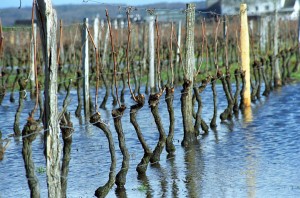 We often hear comments from people that the alcohol content of today’s wines is much higher than it used to be.
We often hear comments from people that the alcohol content of today’s wines is much higher than it used to be.
Today, there are techniques that can reduce the alcohol content of a wine or remove the alcohol all together. This means that a wine with a natural alcohol of 14.5 or 15% could have this level reduced to, say 12-13%. This is not something that is done a lot in France today. But in the UK, the US and in Australia they use these techniques more and more. One example is Jacob’s Creek Lighter Alcohol at 11%.
Membrane techniques such as electro dialysis and reverse osmosis are used to reduce the alcohol and in the US they also use a so called spinning cone. Another possibility is to use a yeast that consumes more sugar than normal for each alcohol percentage it produces.
But is an alcohol level of 14-15 % really a problem if the wine is balanced? Read more: mon-viti.com.
Vegan friendly champagnes from Duval-Leroy and vegan friendly wines from Domaine Montirius
 All champagnes from Champagne Duval Leroy will shortly be vegan friendly. This means that the champagne house will not use fining agents such as milk protein, gelatine or egg whites. Instead their wines are clarified through a natural sedimentation over several months in tanks or barrels.
All champagnes from Champagne Duval Leroy will shortly be vegan friendly. This means that the champagne house will not use fining agents such as milk protein, gelatine or egg whites. Instead their wines are clarified through a natural sedimentation over several months in tanks or barrels.
You don’t always find traces of these fining agents in the finished wine even if they have been used. However, if the producer do find traces in the wine it is now mandatory within the EU to state on the label that the wine contains traces of milk or egg products. If you want to make it more obvious for vegans that the wine is appropriate for them the wine can be certified as vegan friendly by the British Vegan Society. You can find this label on the wines from excellent southern Rhône valley producer Domaine Montirius for instance. Read more: decanter.com.
Sauternes wine and foie gras, a winning combination
What a great combination. A company that sells foie gras buys a Sauternes château. The château is famous Château Rayne Vigneau. The buyer is Trésor du Patrimoine, a company that sells foie gras as well as wine on line. The seller is the French bank Crédit Agricole but they will retain a small share.
A classic French gastronomic combination is foie gras with a sweet wine. And if it is duck’s liver, foie gras de canard, a speciality of the south western part of France, the wine should preferably be a Sauternes. In Sauternes even chateaux like Rayne Vigneau that were classified as Grand Cru Classé in 1855 are struggling with declining sales and consumers who do not really understand when to drink Sauternes. Read more: winespectator.com.
Christmas presents for the vinous adventurer
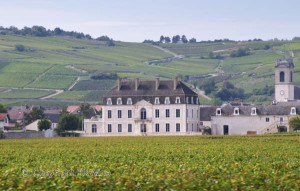 Every wine lover’s favourite Christmas present is surely a wine tour to one of the world’s wine regions! It is a Christmas gift that lasts for a long time with memories for a life time. To give to a wine friend or to yourself.
Every wine lover’s favourite Christmas present is surely a wine tour to one of the world’s wine regions! It is a Christmas gift that lasts for a long time with memories for a life time. To give to a wine friend or to yourself.
Our winter and spring wine tours are already filling up rapidly. South America and South Africa are already fully booked. So the only one where there are still spaces left is the wine tour to Bordeaux. Bordeaux is a fantastic destination for a wine lover. We will take you (or your friend) to some very unique experiences, not available for most travellers, in this famous wine region.
Read all the details on the Bordeaux wine tour here. And if you want we can arrange for a stylish gift card.
A new IGP called Terre du Midi
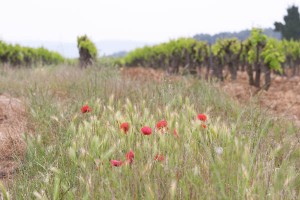 A new IGP (Indication Géographique Protégée, the category that has replaced vin de pays) will soon be launched in the south of France. It will be an IGP that brings together the departments of Aude, Hérault and Gard, all three of them in Languedoc. After several rounds of discussions it has now been decided that the name of this new IGP will be Terre du Midi.
A new IGP (Indication Géographique Protégée, the category that has replaced vin de pays) will soon be launched in the south of France. It will be an IGP that brings together the departments of Aude, Hérault and Gard, all three of them in Languedoc. After several rounds of discussions it has now been decided that the name of this new IGP will be Terre du Midi.
The first name suggestion was Terre du Sud. For the INAO, l’Institut national de l’origine et de la qualité, however, this name was a little too vague and not sufficiently precise. Terre du Midi is more to their liking. But is Midi really an easy name for non-French people to understand? Do they understand that Le Midi means the South of France? Read more: vitisphere.com.
Wine for Christmas?
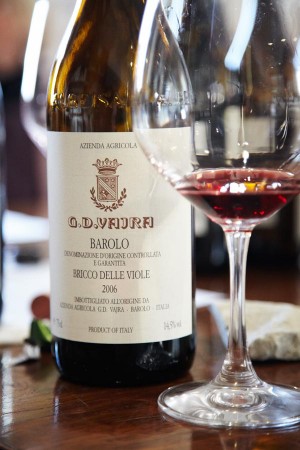 Maybe you want to find a good wine to offer as a Christmas gift. Or you just want a good wine with your Christmas meal. Here are some suggestions that we recently tasted.
Maybe you want to find a good wine to offer as a Christmas gift. Or you just want a good wine with your Christmas meal. Here are some suggestions that we recently tasted.
- Barolo Albe, G.D. Vajra ,Piemonte, Italy, approx 20 euro. Brilliant Barolo with a good balance, aromas of red berries and plums and perfect tannins.
- Terredora Di Paolo, Aglianico Campania IGT, Italy, approx. 12 euro. Great wine from southern Italy. Aglianico is a favourite variety. Full-bodied and structured.
- Bad Boy, Bordeaux, approx 25 euro. A non-traditional Bordeaux made by ex-bad boy of Saint Emilion, Jean Luc Thunevin.
- Les Fontanilles , Languedoc-Roussillon, Minervois, Anne Gros Jean Paul Tollot, approx 20 euro. Typical Languedoc aromas of wild thyme and rosemary and some peppery notes. And elegance.
- Chateau Maris Les Planels Syrah 2011, Minervois La Livinière, Languedoc, approx 20 euro. Organic estate owned by Englishman Robert Eden. Syrah aromas and good concentration.
- Vacqueyras Garrigues 2013, Domaine Montirius, southern Rhône Valley, approx 20 euro. Pure fruit, freshness and a long taste from this excellent biodynamic estate.
White
- Domaine Cauhapé Sève d’Automne, 2012, Jurançon Sec, approx 20 euro. Intense and complex aromas of honey and dried fruit. Powerful, totally dry. Excellent wine.
A Glass of Bubbly on wine travel
 A Glass of Bubbly is an e-zine on all sorts of bubbly wines. They recently featured one of our wine tours in their magazine, our wine tour to South Africa. MCC is what they call the quality sparkling wines in South Africa, short for Methode Cape Classique. Read more on the BKWine Travel Blog on what A Glass of Bubbly has to say on our wine tours.
A Glass of Bubbly is an e-zine on all sorts of bubbly wines. They recently featured one of our wine tours in their magazine, our wine tour to South Africa. MCC is what they call the quality sparkling wines in South Africa, short for Methode Cape Classique. Read more on the BKWine Travel Blog on what A Glass of Bubbly has to say on our wine tours.
And if you are curious about our tour program to the wine lands of South Africa you have all the details here.
Selected wines from the Domaine range
Domaine Wines is a leading Swedish wine importer. They recently presented their range to the specialised press. BKWine Magazine’s reporter Tobias Karlsson reports on the best finds. He found many excellent wines, for example from California, the Rhône Valley, Germany and the Loire Valley.
Read more in Tobias’ article on BKWine Magazine: Cherry-picking in the Domaine range.
Time for a comeback in Rioja with Bodegas Baigorri | Britt on Forbes
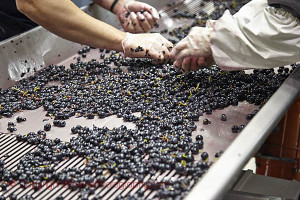 Rioja in northern Spain is back in the limelight. Known for its long lived Reserva and Grand Reserva wines with soft vanilla aromas, Rioja producers are today showing a range of styles. One good example of “new style Rioja without totally abandoning tradition” is Bodegas Baigorri in Rioja Alavesa, the most northern Rioja region. Baigorri is a fairly new producer who started only in 2000. We recently made a few visits to Baigorri and we were highly impressed, both by the quality of the wines and the fabulous modern design of the winery.
Rioja in northern Spain is back in the limelight. Known for its long lived Reserva and Grand Reserva wines with soft vanilla aromas, Rioja producers are today showing a range of styles. One good example of “new style Rioja without totally abandoning tradition” is Bodegas Baigorri in Rioja Alavesa, the most northern Rioja region. Baigorri is a fairly new producer who started only in 2000. We recently made a few visits to Baigorri and we were highly impressed, both by the quality of the wines and the fabulous modern design of the winery.
Read more on BKWine Magazine in Britt’s article originally published on Forbes: Time for a comeback in Rioja with Bodegas Baigorri | Britt on Forbes.
Bordeaux: Médoc and Graves, an introduction
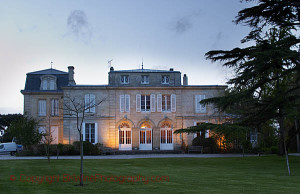 Médoc is the perfect location for viticulture with the Atlantic Ocean on one side and the Gironde bay on the other. The vineyards are located along the Gironde and the pine forest along the Atlantic coast protects vineyards from rain and sea breezes. In total Médoc consists of 11 000 hectares, ie about one tenth of the entire Bordeaux. It is divided into six municipalities and eight appellations. In addition to the four most famous communes, Margaux, Saint-Julien, Pauillac and Saint-Estèphe, there are two additional, Moulis and Listrac. These six all have their own appellations.
Médoc is the perfect location for viticulture with the Atlantic Ocean on one side and the Gironde bay on the other. The vineyards are located along the Gironde and the pine forest along the Atlantic coast protects vineyards from rain and sea breezes. In total Médoc consists of 11 000 hectares, ie about one tenth of the entire Bordeaux. It is divided into six municipalities and eight appellations. In addition to the four most famous communes, Margaux, Saint-Julien, Pauillac and Saint-Estèphe, there are two additional, Moulis and Listrac. These six all have their own appellations.
Continue reading Britt’s article on BKWine Magazine: Bordeaux: Médoc and Graves, an introduction.
If you want to really dive into the wines of Bordeaux come on a wine tour to Bordeaux with BKWine.
Australia – An evolving wine history, sometimes a revolution
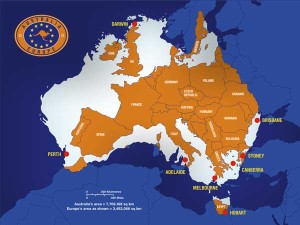 When Mark Davidson was asked to describe with a single word Australian wines, he was stumped. There is no one word that can describe Australian wines, so he chose three: “History, Evolution, Revolution”. This became the name of a Master Class of Australian wines recently held in Stockholm by Mark, who is the Education Director for Wine Australia. Australia is a big country, but it is a big Wine Country? It depends on how you define big. The area used for wine growing in Australia is as big as the Languedoc in France, while the continent is 14 times larger than France. It was a mixed guidance, so now let the wines speak.
When Mark Davidson was asked to describe with a single word Australian wines, he was stumped. There is no one word that can describe Australian wines, so he chose three: “History, Evolution, Revolution”. This became the name of a Master Class of Australian wines recently held in Stockholm by Mark, who is the Education Director for Wine Australia. Australia is a big country, but it is a big Wine Country? It depends on how you define big. The area used for wine growing in Australia is as big as the Languedoc in France, while the continent is 14 times larger than France. It was a mixed guidance, so now let the wines speak.
Read the more on history, evolution and revolution in Australia in the continuation of Mikael Karlin’s article on BKWine Magazine: Australia – An evolving wine history, sometimes a revolution.
Selected Bordeaux primeurs 2014, and some older vintages. Purchasing opportunity?
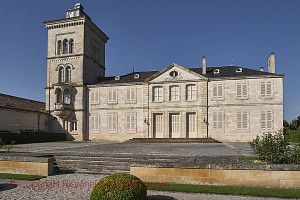 We are now nearing the end of 2015 and many of us who are wine enthusiasts have probably had an opportunity to taste at least a few of the wines of the new vintage 2014. The countries located in the southern hemisphere have, obviously, an advantage and it is far from unusual that a Riesling or a sauvignon blanc finds its way to the north before the year is over. It is not even excluded that some red wines starts arriving. However, most wines that are released so early meant to be drunk young. That is why at first glance it may look strange that Bordeaux wines of the 2014 vintage are already out there for evaluation.
We are now nearing the end of 2015 and many of us who are wine enthusiasts have probably had an opportunity to taste at least a few of the wines of the new vintage 2014. The countries located in the southern hemisphere have, obviously, an advantage and it is far from unusual that a Riesling or a sauvignon blanc finds its way to the north before the year is over. It is not even excluded that some red wines starts arriving. However, most wines that are released so early meant to be drunk young. That is why at first glance it may look strange that Bordeaux wines of the 2014 vintage are already out there for evaluation.
BKWine Magazine’s reporter Tobias Karlsson went to taste some 30 primeurs from some of the best Bordeaux chateaux, plus some older vintages. Read about his top picks: Selected Bordeaux primeurs 2014, and some older vintages. Purchasing opportunity?
You will have plenty of opportunities to taste both young and not so young Bordeaux wines on a wine tour to Bordeaux with BKWine.
Rust en Vrede Estate, one of the world’s best wines?
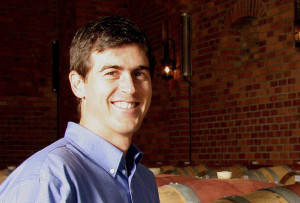 Rust en Vrede is not only South Africa’s first specialist in red wines only, but also one of the very best. A vertical tasting of ten vintages of the Estate wine 1995-2013 provides a great opportunity to take a close look. It is also an illustration of the differences between the work of all of the farm’s no more than three winemakers over course of the past 28 years.
Rust en Vrede is not only South Africa’s first specialist in red wines only, but also one of the very best. A vertical tasting of ten vintages of the Estate wine 1995-2013 provides a great opportunity to take a close look. It is also an illustration of the differences between the work of all of the farm’s no more than three winemakers over course of the past 28 years.
Read more on these wines, some of which are currently available on the market, some not, in Mikael Karlin’s article on BKWine Magazine: Rust en Vrede Estate, one of the world’s best wines?
Curious to know more on South African wines? Come on a wine tour to South Africa with BKWine.
Top class Burgundy: Corton-Charlemagne from Bonneau du Martray
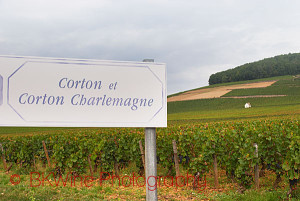 Domaine Bonneau du Martray is a Burgundy Domain in Pernand-Vergelesses with very concentrated vineyard holdings: 11 hectares on the Corton Hill, of which 9.5 ha of chardonnay and 1.5 ha of pinot noir, and no other vineyards. It is said to be the only domain in Burgundy which has only Grand Cru vineyards. From this holding are produced only two wines: a white Corton-Charlemagne and a red Corton.
Domaine Bonneau du Martray is a Burgundy Domain in Pernand-Vergelesses with very concentrated vineyard holdings: 11 hectares on the Corton Hill, of which 9.5 ha of chardonnay and 1.5 ha of pinot noir, and no other vineyards. It is said to be the only domain in Burgundy which has only Grand Cru vineyards. From this holding are produced only two wines: a white Corton-Charlemagne and a red Corton.
Read more on these exclusive Burgundy wines in Tomas Eriksson’s article on BKWine Magazine: Top class Burgundy: Corton-Charlemagne from Bonneau du Martray.
[hr]
Don’t be an egoist! Share with your friends and other wine enthusiasts! Forward the Brief to your friends! Suggest that they sign up for a free subscription !
© Copyright BKWine






